
Titus Oates was an English priest who fabricated the "Popish Plot", a supposed Catholic conspiracy to kill King Charles II.

The Popish Plot was a fictitious conspiracy invented by Titus Oates that between 1678 and 1681 gripped the kingdoms of England and Scotland in anti-Catholic hysteria. Oates alleged that there was an extensive Catholic conspiracy to assassinate Charles II, accusations that led to the executions of at least 22 men and precipitated the Exclusion Bill Crisis. During this tumultuous period, Oates weaved an intricate web of accusations, fueling public fears and paranoia. However, as time went on, the lack of substantial evidence and inconsistencies in Oates's testimony began to unravel the plot. Eventually, Oates himself was arrested and convicted for perjury, exposing the fabricated nature of the conspiracy.
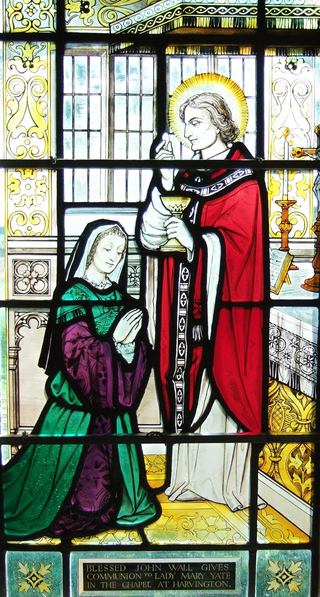
John Wall,(aliases John Marsh, Francis Johnson or Dormore or Webb, religious name "Joachim of St. Ann") was an English Franciscan friar, who is honoured as a martyr by the Catholic Church. Wall served on the English mission in Worcestershire for twenty-two years before being arrested and executed at the time of Titus Oates's alleged plot.

The Forty Martyrs of England and Wales or Cuthbert Mayne and Thirty-Nine Companion Martyrs are a group of Catholic, lay and religious, men and women, executed between 1535 and 1679 for treason and related offences under various laws enacted by Parliament during the English Reformation. The individuals listed range from Carthusian monks who in 1535 declined to accept Henry VIII's Act of Supremacy, to seminary priests who were caught up in the alleged Popish Plot against Charles II in 1679. Many were sentenced to death at show trials, or with no trial at all.
Mark Barkworth was a Catholic priest and martyr.
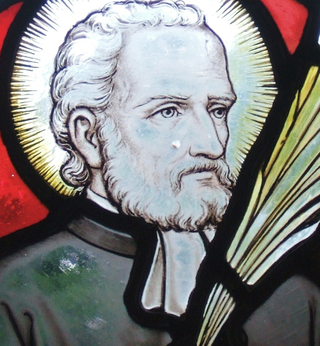
John Kemble was an English Roman Catholic martyr. He was one of the Forty Martyrs of England and Wales.

Roger Filcock was an English Jesuit priest. He was beatified as a Catholic martyr by Pope John Paul II on 22 November 1987.
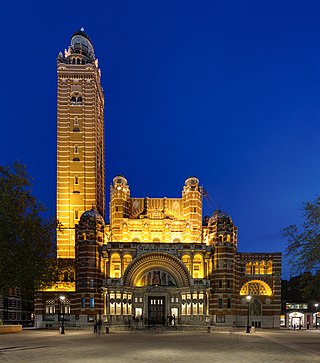
The Catholic Church in the United Kingdom is part of the worldwide Catholic Church in communion with the Pope. While there is no ecclesiastical jurisdiction corresponding to the political union, this article refers to the Catholic Church's geographical representation in mainland Britain as well as Northern Ireland, ever since the establishment of the UK's predecessor Kingdom of Great Britain by the Union of the Crowns in 1707.

The Venerable English College, commonly referred to as the English College, is a Catholic seminary in Rome, Italy, for the training of priests for England and Wales. It was founded in 1579 by William Allen on the model of the English College, Douai.

David Lewis, S.J. was a Jesuit Catholic priest and martyr who was also known as Charles Baker. Lewis was canonized by Pope Paul VI in 1970 as one of the Forty Martyrs of England and Wales and is venerated as a saint in the Catholic Church. His feast day is celebrated on 27 August.

John Plessington, also known as John Plesington, William Scarisbrick and William Pleasington, was an English Catholic priest who was executed by the English Crown for violating the ban on the presence of Catholic priests in the kingdom. He is now venerated as a saint, honored as one of the Catholic Forty Martyrs of England and Wales.

The Eighty-five Martyrs of England and Wales, also known as George Haydock and Eighty-four Companion Martyrs, are a group of men who were executed on charges of treason and related offences in the Kingdom of England between 1584 and 1679. Of the eighty-five, seventy-five were executed under the Jesuits, etc. Act 1584.
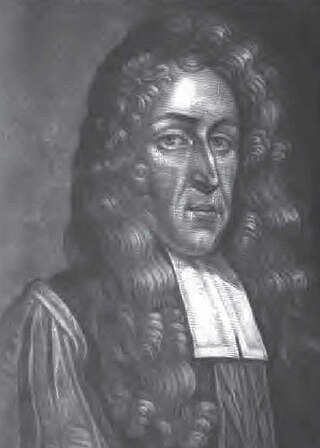
Richard Langhorne was an English barrister and Catholic martyr, who was executed on a false charge of treason as part of the fabricated Popish Plot. He fell under suspicion because he was a Roman Catholic and because he had acted as legal adviser to the Jesuits at a time of acute anti-Catholic hysteria.

Thomas Whitbread was an English Jesuit missionary and martyr, wrongly convicted of conspiracy to murder Charles II of England and hanged during the Popish Plot. He was beatified in 1929 by Pope Pius XI and his feast day is celebrated on 20 June.
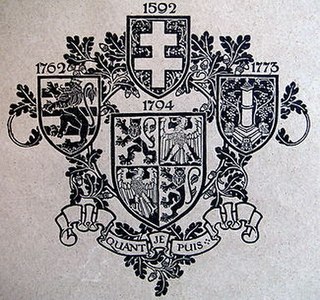
The Colleges of St Omer, Bruges and Liège were successive expatriate institutions for Roman Catholic higher education run by the Jesuits for English students.

William Barrow was an English Jesuit, executed as a result of the fictitious so-called Popish Plot, that between 1678 and 1681 gripped the Kingdoms of England and Scotland in anti-Catholic hysteria. Barrow is regarded as a martyr of the Roman Catholic church and was beatified in 1929.

John Fenwick, real surname Caldwell was an English Jesuit, executed at the time of the fabricated Popish Plot. He is a Catholic martyr, beatified in 1929 by Pope Pius XI.
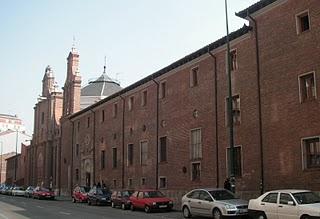
The Royal English College of Valladolid is a residence and training centre located in Valladolid, Spain, for the training of Catholic priests in England and Wales. It is under the patronage of St Alban.

Gunter Mansion, 37–39 Cross Street, Abergavenny, Monmouthshire is a house of the early 17th century. It was built around 1600 and mentioned in 1678 in the House of Commons of the United Kingdom as a place of public Catholic worship. It was the final place of prayer for Saint David Lewis before his execution on 27 August 1679. It is a Grade II* listed building.






















